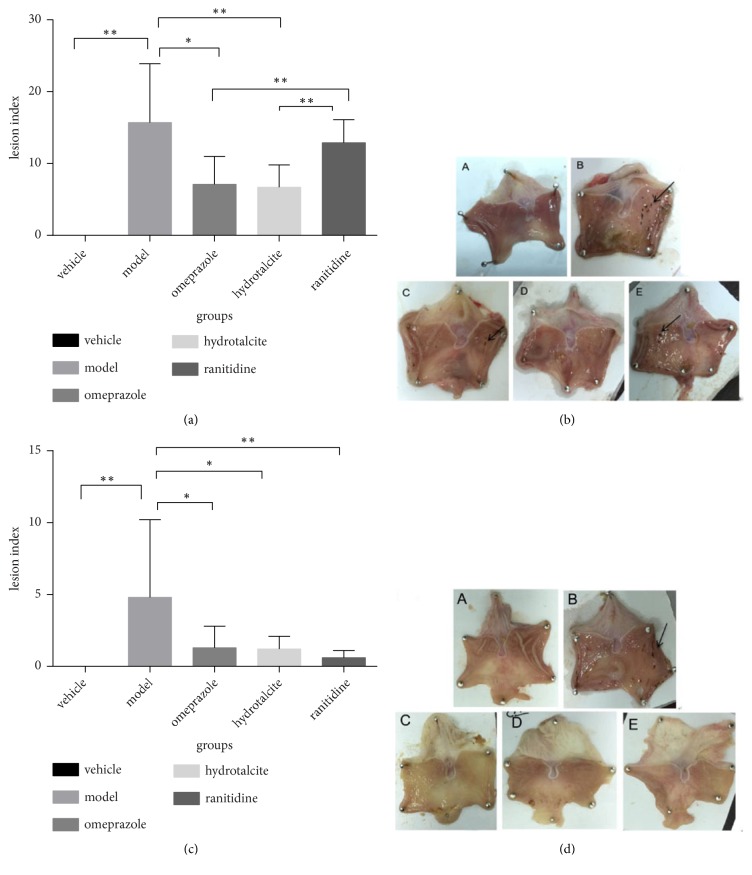Figure 1.
Preventive and therapeutic effect of hydrotalcite against indomethacin-induced gastric injury in rats. (a) Omeprazole, hydrotalcite, ranitidine, or vehicle was taken preventively by oral gavage before 30mg/kg indomethacin was given. Omeprazole and hydrotalcite significantly decreased the gastric injury in the mucosa of stomach, compared with the model group. (b) Stomach lesions in preventive experiment. A: vehicle group, the gastric mucosa was smooth, the color was ruddy, and the mucosal fold was clear. B: model group, obvious hyperemia and edema with mucosal defects that were spot hemorrhage and dispersed to all stomach surfaces. C: omeprazole group, a little spot-shaped erosion with mild hyperemia. D: hydrotalcite group, slight erosion like C. E: ranitidine group, linear ulcer lesion. Arrows indicate the area of hemorrhagic lesions in the inner surface of the stomach. (c) Gastric injury was induced by oral administration of 30mg/kg indomethacin, and then different drugs or vehicle was treated by oral gavage for 3 days. Omeprazole, hydrotalcite, and ranitidine treatment all significantly decreased the gastric injury in the mucosa of stomach, compared with the control group. (d) Stomach lesions in therapeutic experiment. A: vehicle group, the gastric mucosa was smooth, the color was ruddy, and the mucosal fold was clear. B: model group, a great deal of blood clot on the surface of mucosa, hyperemia and edema on mucosa obviously. C: omeprazole group, pale mucosa and only a small amount of dot erosion. D: hydrotalcite group, like C. E: ranitidine group, like C. Arrows indicate the area of hemorrhagic lesions in the inner surface of the stomach. Values are expressed as means±SD. ∗P<0.05, ∗∗P<0.01.

